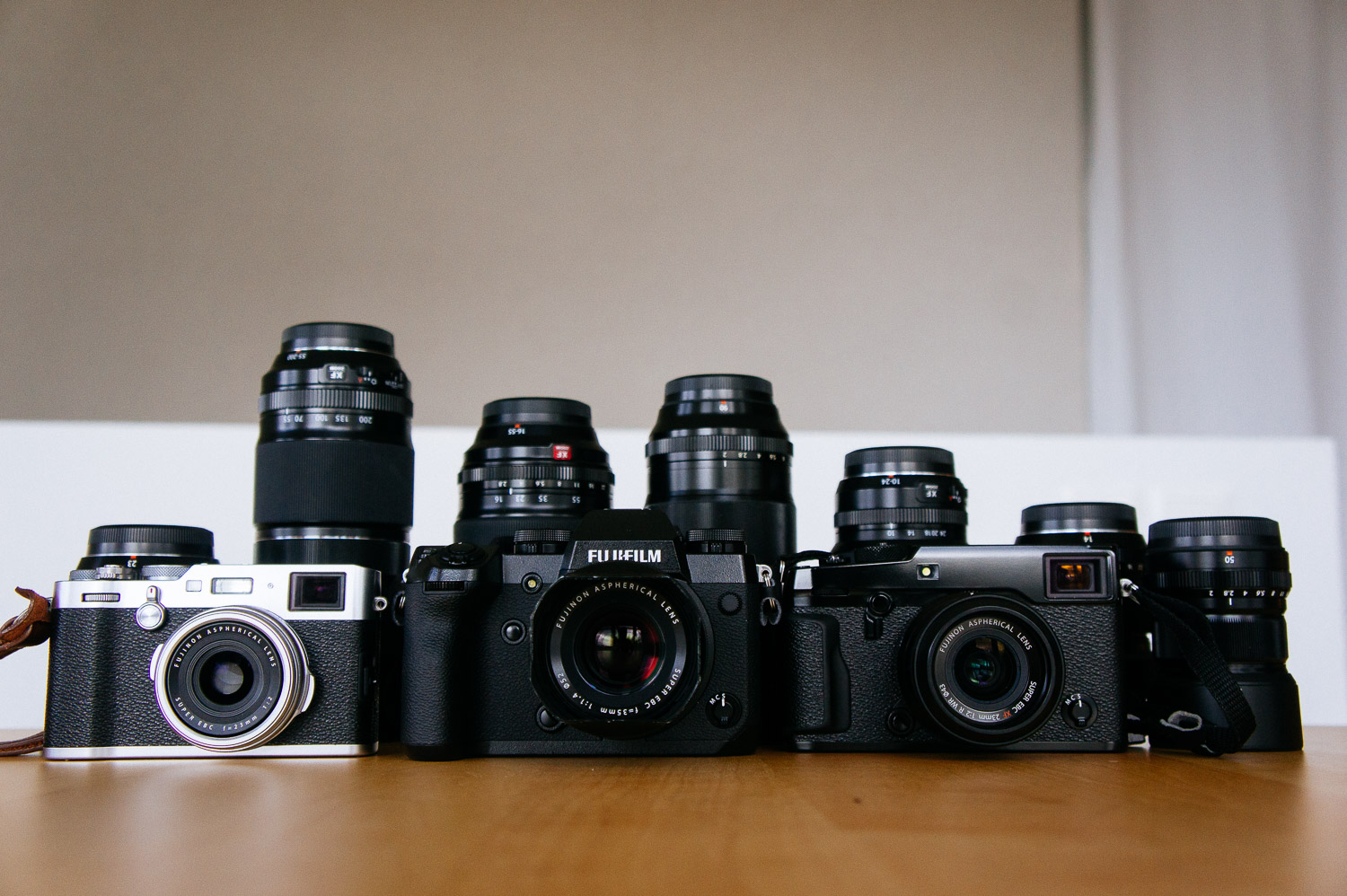 SONY NEX-5 (28mm, f/4, 1/50 sec, ISO640)
SONY NEX-5 (28mm, f/4, 1/50 sec, ISO640)
I haven’t wrote about gear for some time for a good reason. I didn’t buy any new photography gear for a while, instead I sold some stuff.
I’m downsizing but I’m still a gear head. So downsizing means that I’m down to three cameras, six prime lenses and three zooms.
Of course I’m fully aware that for the average person three cameras and nine lenses is still crazy. But this is an attempt to explain why I still have those and not went to one or even zero and fully rely on my iPhone to record memories.
So here is a rather long blog post with a lot to read but I guess most of us have more time on their hands now and we all can use a break from the news.
Cameras first:
I have a long an extensive camera history. From a simple Kodak compact film camera, to old manual film SLRs that my father gave to me. My first SLR, a Nikon F801, that I bought with my own money. First digital compacts as early as 1999 and the early DSLRs like the Nikon D1. Later the move to full frame with the Canon 5D, later 6D and Sony A7R with adapted Canon L lenses.
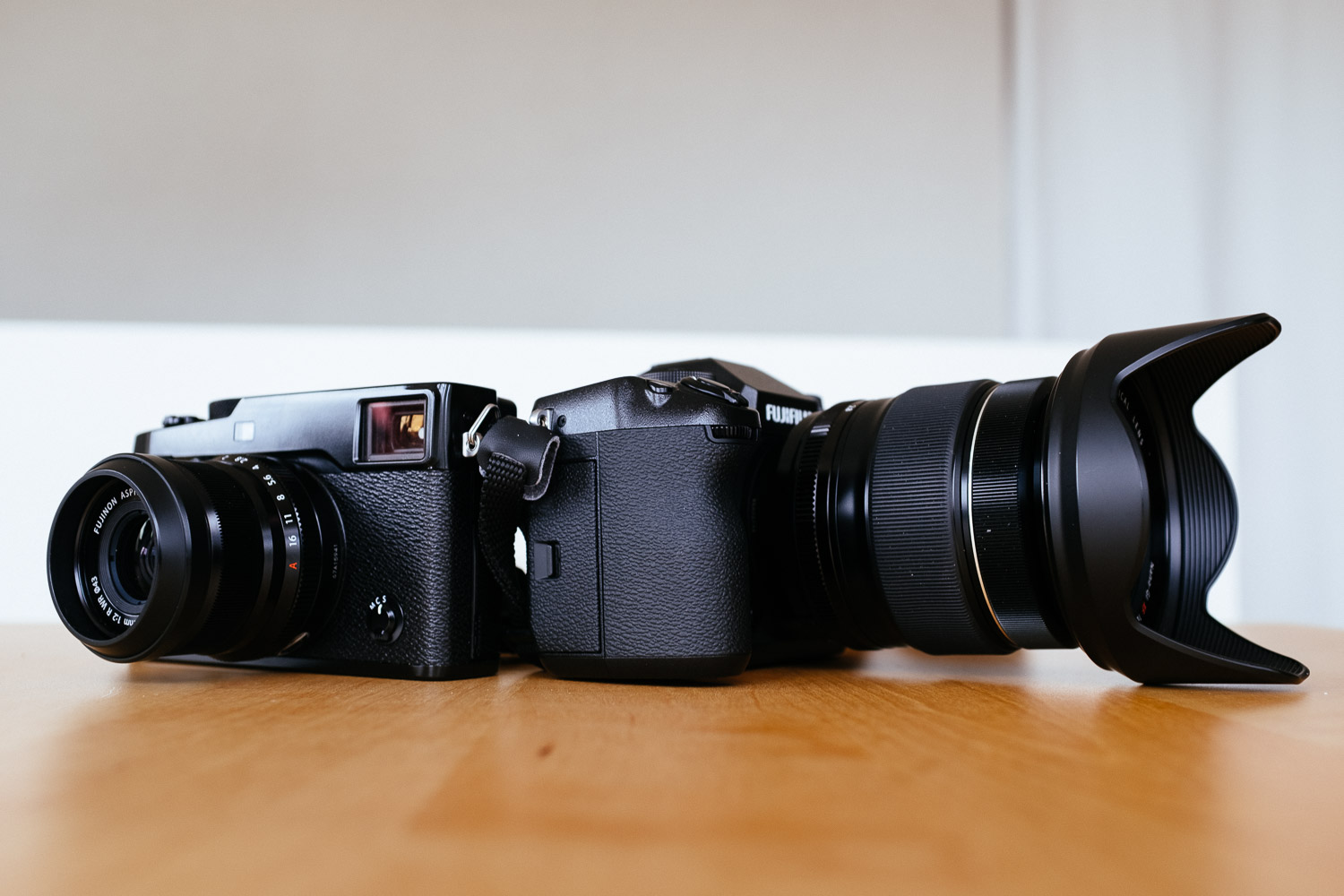 FUJIFILM X100F (23mm, f/4, 1/13 sec, ISO200)
FUJIFILM X100F (23mm, f/4, 1/13 sec, ISO200)
Even my Fuji camera history is long: X100 when it came out, X-Pro1, X-T1 to the X-Pro2 which is my main camera now since it came out in spring 2016. So here is why I still have three cameras and why I like them so much.
The Fuji X-Pro2: For me this is simply the greatest camera ever made. I just love it. I simply enjoy to shoot with it. The full manual access of everything if I need it and the fact that I change aperture on the lens again was a game changer for me in photography. I almost forgot how good and natural that feels after all those years with modern SLRs and DSLRs.
I understand that it doesn’t work for everybody but for me this is the way I want to operate a camera. Because of the strange implementation of the display I will not get the X-Pro3. I have no problem with that (anymore). My X-Pro2 still works perfectly fine.
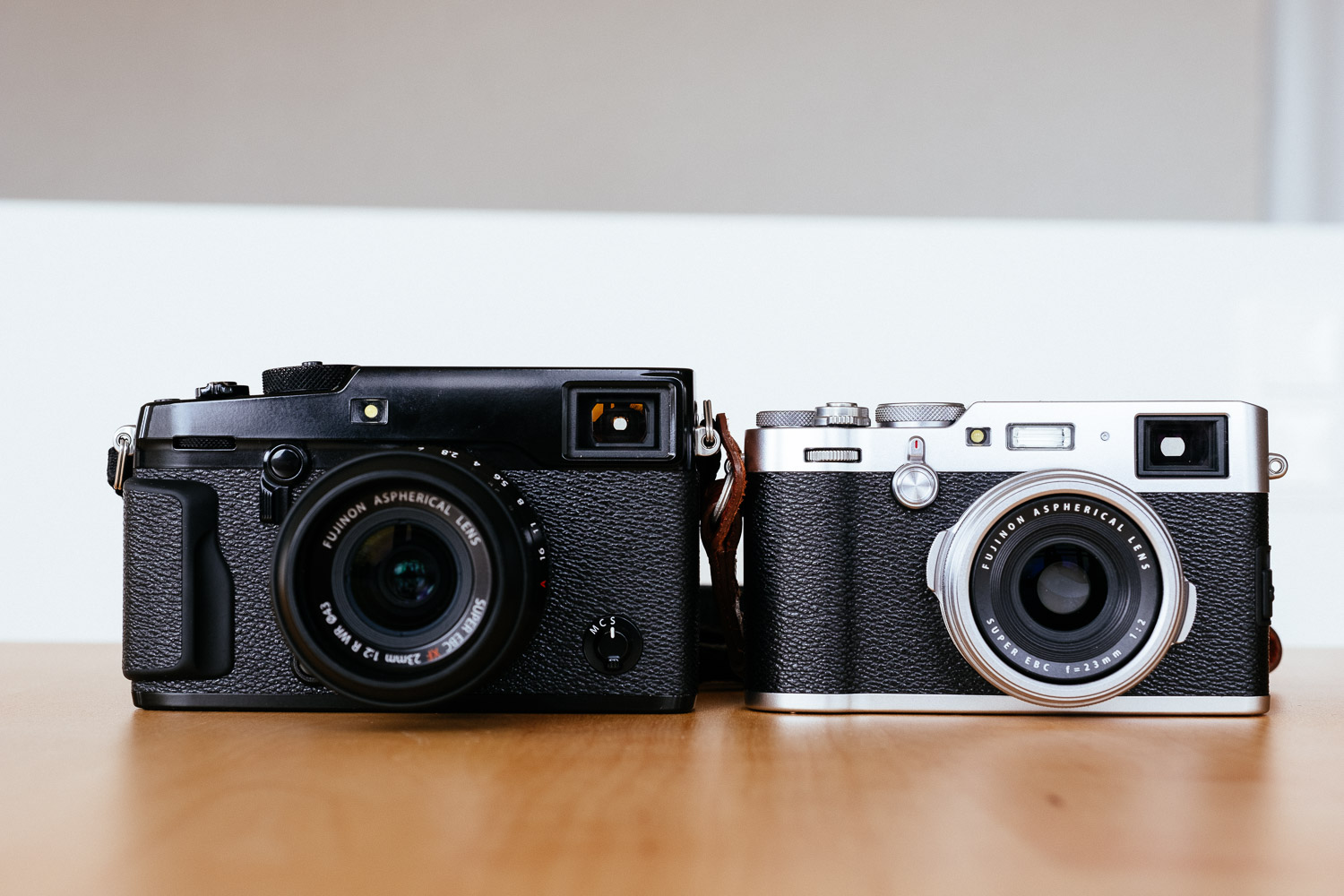 FUJIFILM X-H1 (36.5mm, f/5.6, 1/8 sec, ISO200)
FUJIFILM X-H1 (36.5mm, f/5.6, 1/8 sec, ISO200)
The Fuji X100F: When I sold my X100 I replaced it with a Ricoh GR because the Ricoh was much more compact and lighter. But of course the shooting experience and also the output was never the same. At the end I got an X100 again the X100F. Same sensor generation as my X-Pro2, almost the same great handling – a perfect “compact camera” with a built in flash that sometimes comes in very handy.
A great social camera and a great solution when you don’t want to take a camera bag but still want professional results. For some this might be all the camera the ever need.
The Fuji X-H1: Compared to the other two cameras I didn’t buy the camera when it came out. When I played with it in a camera store in Tokyo I was immediately impressed by the built quality, the viewfinder and the super silent shutter mechanism. The reason why I didn’t buy it was its size and even more so its weight. With this camera light and small is gone and we are back in DSLR territory.
But when the price dropped to ridiculous levels and I wanted a second camera for my vacation in the USA in autumn 2019 I finally bought it. It’s a fantastic camera and for the discounted price it is a steal. It’s made as solid as it gets and it’s a dream to shoot. IBIS of course is a very nice touch too especially with my primes and the 16-55. It’s a keeper but for trips to Asia with my three favourite primes I still prefer the X-Pro2.
Lenses, Zooms first:
When I started with Fuji it was primes only and I loved it. I still think that this is where Fuji is the strongest but there is no way to deny that sometimes zooms are more practical. I prefer them on my vacations when I travel around in a rented car. No long walks so the weight of the photography gear doesn’t really matter. If that’s the case nothing beats the X-H1 plus 16-55 combo.
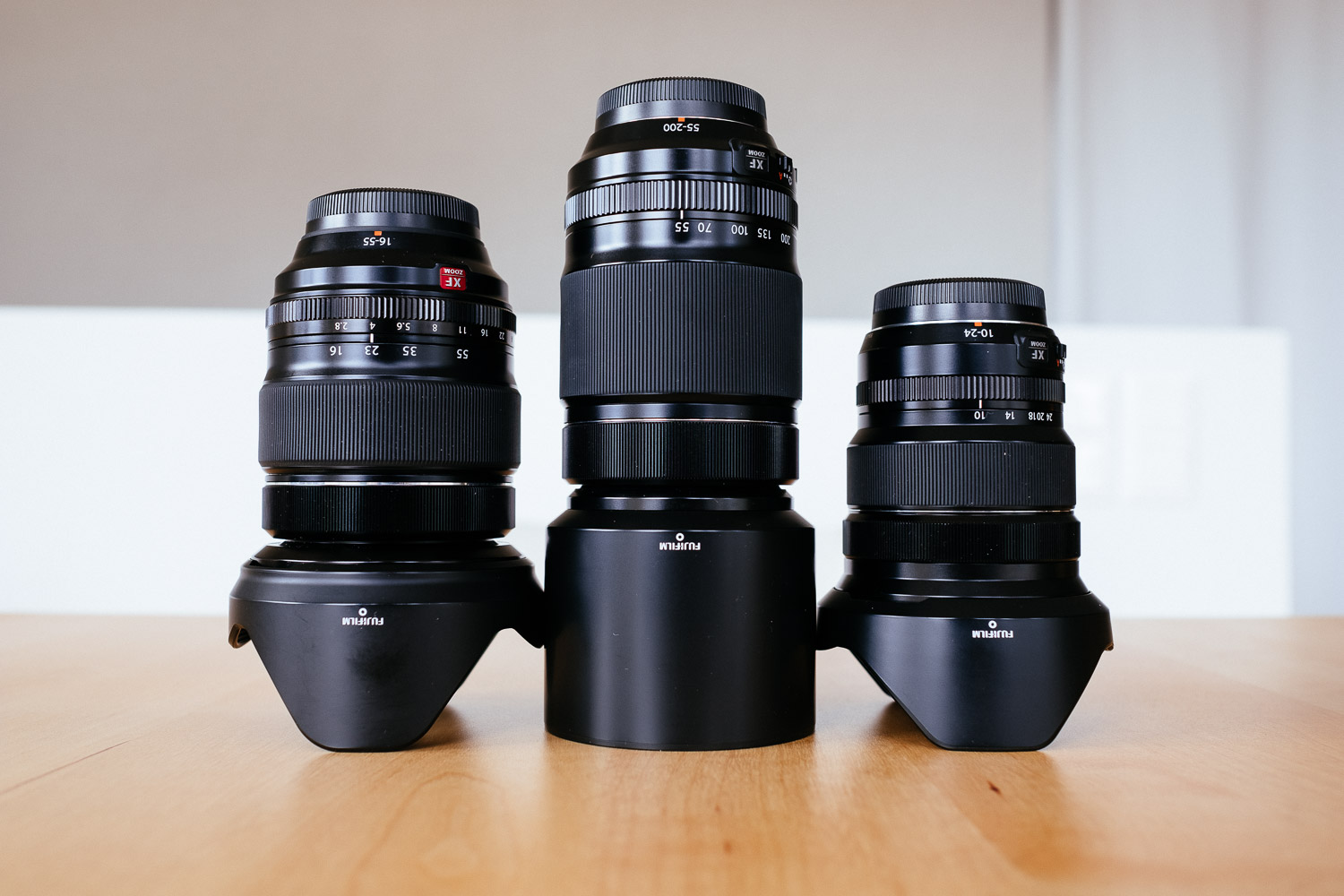 FUJIFILM X-H1 (23mm, f/4, 1/15 sec, ISO200)
FUJIFILM X-H1 (23mm, f/4, 1/15 sec, ISO200)
XF 10-24/4 OIS: Of course every enthusiastic travel photographer needs a true wide angle lens. Regarding zooms you have two choices in the Fuji line. There is the super nice but also rather big, heavy and expensive XF 8-16/2.8 WR and the much more compact, much lighter and sensible priced XF 10-24/4 OIS. I love this lens. It gives you that dramatic views that only a true super wide angle lens can. It’s optical quality is very good, in fact it is excellent. A must have Fuji lens. I only wish it would have a marked aperture ring but that’s nitpicking.
XF 16-55/2.8 WR: When it was announced it was clear to me that I would never get the lens. Not so much because of the lack of OIS but because of size and weight. Well: Never say never! At the end I got it and I think it is a brilliant lens. Just like my favourite zoom of all time, the fantastic Canon 24-70/2.8 II, the Fuji 16-55 is the lens that can cover almost everything. It’s so much better than the 18-55 which I think is the most overrated lens in the Fuji line. Even if you are put off by the weight and the size of the 16-55 this is the standard zoom that you should get.
XF 55-200/3.5-4,8 OIS: Still rather small and compact and image quality is good. However I don’t think it is that much better then the much smaller, lighter and cheaper 50-230 OIS that I also had before I finally switched to Fuji completely. Sometimes I think I simply should have kept the 50-230. Maybe I will finally give in and get the XF 50-140/2.8 OIS or I wait for the rumoured 70-300. As you can see by my remarks I’m not totally happy with this lens and I most likely will replace it sooner or later.
I used to have the 100-400 which I think is really excellent for such a lens but also very large and heavy. Unless you are really serious about wildlife and bird photography it is rather hard to justify to haul along such a massive lens. The 50-140 plus the 1.4 converter might be the better option for travellers especially because of the better subject separation for portraits and the greater flexibility.
Of course if you want keep it light and simple there is nothing wrong with the 16-50 and 50-230 combo which gives good results too that I think are hardly distinguishable from what you get from the 18-55 and the 50-200.
Prime Lenses:
This is where Fuji really shines. There is so much choice and considered their performance the lenses are surprisingly affordable. Not compared to some cheap 50/1.8 SLR lenses but compared to lenses from Zeiss or Leica. So there is a high risk to end up with more lenses than you might need. I know what I’m talking about, it happened to me. I had many of them and I still have six. Here they are.
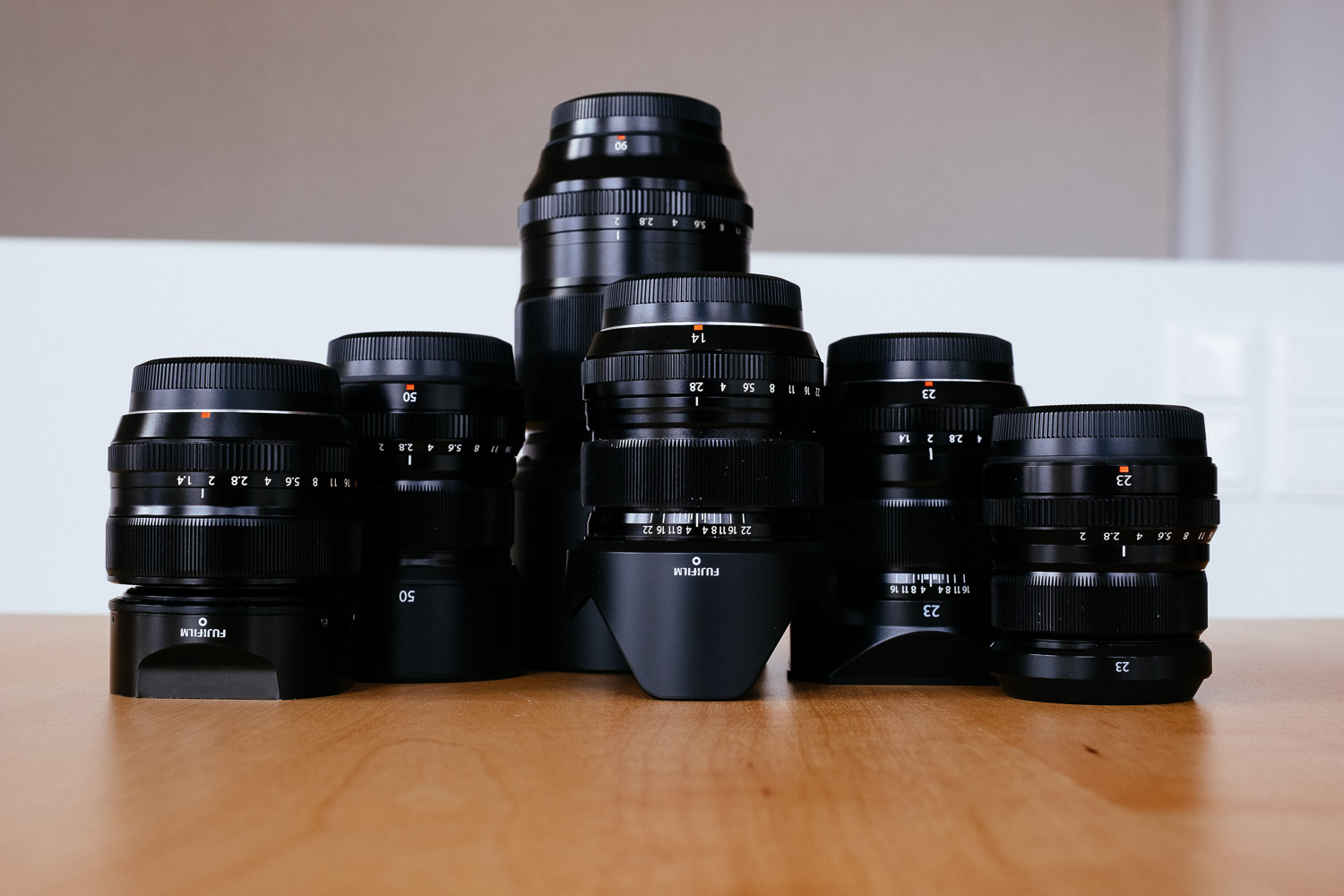 FUJIFILM X-H1 (32.1mm, f/8, 1/8 sec, ISO200)
FUJIFILM X-H1 (32.1mm, f/8, 1/8 sec, ISO200)
XF 14/2.8 R: One of the oldest Fuji lenses which came out in 2013 when the system was still young. So yes AF is rather noisy and the aperture ring almost turns by itself if it’s windy. The lens shade is nothing special too. In fact it is the same ugly thing that Fuji uses for the 18-55. It’s even printed on the lens shade. Really, Fuji?!
Despite all that I think this is one of Fuji’s finest lenses. Maybe it is their best lens. There is zero distortion and the image is sharp across the frame from f4 and still impressive wide open at f2.8. This is the greatest lens for a travel photographer who prefers to shoot with primes to keep the camera gear small and light. It’s my favourite Fuji lens by far.
XF 23/1.4 R: Also one of the older lenses from Fuji but they got the aperture ring right on that one. It’s close to perfect. Unfortunately AF isn’t. It’s rather quiet and it is not that slow but I find it to be a little unreliable in poor light. It’s not a big or heavy lens but of course compared to some other primes from Fuji it is. It comes with an ugly lens shade but there is a great rectangular lens shade from Fuji available which is a must buy in my opinion.
Despite all the critical things I just wrote this is a special lens. The chance to separate the subject from the background is really something special for such a short focal length. Image quality is top notch. I think this is a great lens for portraits where you also want to include the surroundings. Would I purchase it again today? Honestly I don’t know. Will I sell it? No because I’m too afraid that I might regret it and I sold my XF 16/1.4 WR without much hesitation.
XF 23/2 WR: This is one of the modern Fuji lenses. Fast and silent AF, the aperture ring just works and it is also WR (weather resistant). It’s also super small and compact and it doesn’t cost much too. So what’s not to like? Nothing! Yes I know that some complain that it is not sharp wide open and close up. Well then simply don’t shoot closeups wide open with it. It is as simple as that.
This is a great little lens that produces images that are sharp and contrasty. A dream lens again or a travel photographer. My second favourite lens from Fuji because it is light and small and because it doesn’t have any real weaknesses.
XF 35/1.4 R: One of the first Fuji lenses that I got together with the X-Pro1 in 2012. So the lens is rather old. That means you get an old fashioned, rather noisy, AF that is not exactly blazing fast and an aperture ring that turns far too easily. But the lens shade is very nice and the lens is light and compact.
So you already might guess it. This is a great lens. Just like the 23/1.4 there is something special in the image it renders. I know that this always creates controversy if you can’t clearly describe what makes it special. If you can’t pin it down to sharpness, contrast or other technical parameters. I still give it a try: I think what makes those lenses special is that Fuji focused on Bokeh (the quality of the unsharp parts of the image often confused with the quantity) and how natural the lens renders contrast. A very special lens and my third favourite lens in the Fuji line.
XF 50/2 WR: A lens that I only purchased because I dropped my 35/1.4 right before a trip to South Korea so I thought this might be a nice substitute. I meanwhile got the 35/1.4 back from repair and it is still my preferred choice as it is more flexible. The XF 50/2 WR is a very nice lens though. Fast silent AF, perfect aperture ring, small and compact and weather resistant.
Even more important: It is sharp and Bohek looks nice. No, it is not as good as the 56/1.2 that I used to own but exchanged for a 90/2 but it is a good lens. I personally just prefer a slightly wider view for portraits or a real tight portrait. That’s why I either grab the 35/1.4 or the 90/2.
XF 90/2 WR: Last but not least my longest prime lens. Coming from Canon I sometimes miss the 24-70/2.8 II and the 70-200/2.8 II but one lens I also missed for tight portraits was the 135/2. And while there are no perfect replacements for the two zooms the 90/2 is the perfect substitute for the 135/2. Yes it is still one stop slower regarding depth of field but I stopped down the 135/2 at least to f2.8 or f4 for close portraits to gain some depth of field.
The 90/2 is a modern Fuji lens with fast and silent AF, perfect aperture ring and it’s WR too. It’s sharp wide open and its Bokeh is really nice. There is one thing I have to mention though. I don’t miss OIS that much on the 16-55 but on such a long lens not to have image stabilisation is an issue. Not so much regarding getting a sharp image: Just shoot at 1/200s or faster and you are fine. I’m talking about precise framing.
I still like to crop tight as I used to do when shooting slide film. Now with the frame jumping up and down because I fail to keep the camera steady I can’t frame that tight anymore except of course I shoot with the X-H1. The 90/2 is the lens where you really want to have a camera with IBIS (in body image stabilisation). Beside that it is a fantastic lens for portraits and also for full body shots at the beach with a nicely blurred background. Something you normally get from a 70-200/2.8 on a full frame camera.
Final Words: Are Fuji cameras tough enough?
One last word regarding how tough Fuji cameras are and if you really need Titan and a special coating. A special coating that might be scratch resistant but collects grease that let the camera look disgusting if you don’t shoot it with gloves. I think you know which camera I’m talking about. 😉
Here is a close up of my X-Pro2. I have this camera since March 2016 when it came out. Four years of heavy use and travel in various parts of the world. This camera survived over 50 degrees Celsius in the Death Valley in 2016 during a heatwave as well as -20 degrees Celsius in the Austrian Alps in 2018. It survived the dirt and dust of India and various food spills and drink spills when it was around my neck. And this is how it looks after 4 years:
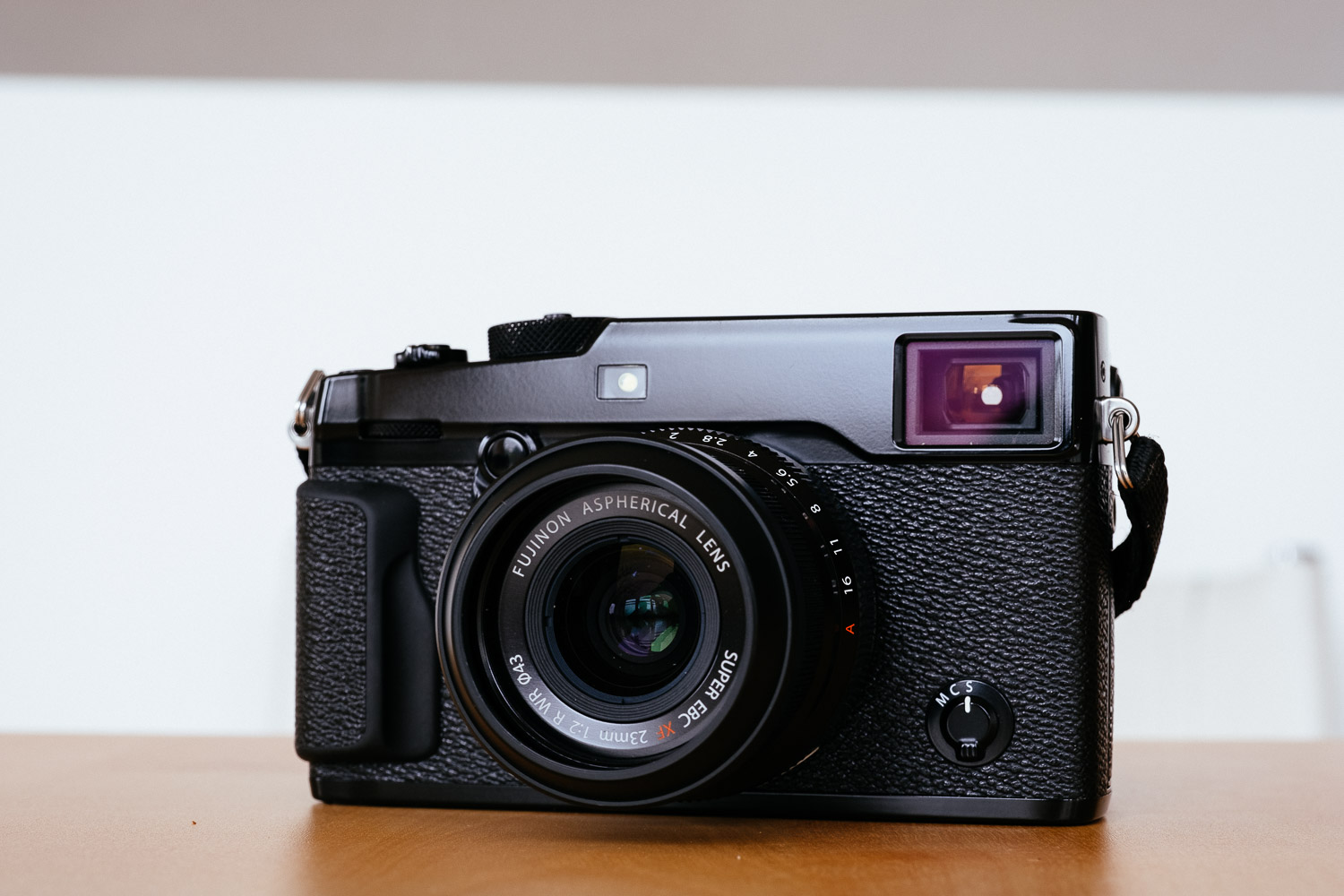 FUJIFILM X-H1 (50mm, f/9, 1/4 sec, ISO200)
FUJIFILM X-H1 (50mm, f/9, 1/4 sec, ISO200)
Honestly I think that this is impressive and I can’t imagine how it could be any better. So if you get the X-Pro3 do yourself a favour and get the normal black version instead of one of the duratects.
That’s it for now. Take care!
